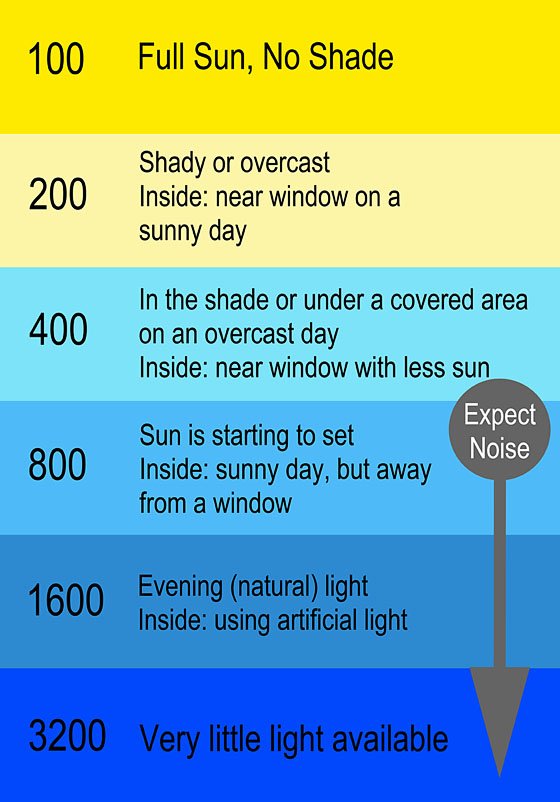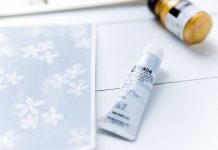When you first bought your new DSLR camera, you were certain that your photos would be just as beautiful as the ones posted all over the internet. The colors in your images would pop and with higher ISO abilities, you’d never have to worry about grainy images again.

Unfortunately, you’re still seeing a lot of “noise” in your photos, and you’re not exactly sure why. Today we’ll diagnose the problem and provide a few ways to fix the grain.
DIAGNOSING THE PROBLEM
Let’s review what ISO is and does. If you haven’t already read our tutorial on ISO Basics, you can do so now.
In short, ISO is:
A term derived from standards adopted by the International Organization for Standardization. It is a reference to the days of film photography as it relates to film’s sensitivity to light. The lower ISO film number (100, 200, etc.) the lower amount of grain or noise you can expect in your final image.
The same concept applies to digital images. However, rather than measuring film’s sensitivity to light, ISO measures the camera’s imaging sensor’s sensitivity to light.
ISO plays a significant role within the exposure triangle. Aperture, shutter speed and ISO must work together to create a properly exposed image. Therefore, your ISO setting will change based on its interaction with aperture and shutter speed. What we do know, though, is that the higher ISO number you use, the more grain you can expect in your images.

THE SOLUTION?
While it would seem that simply shooting with the lowest ISO setting will minimize the amount of grain in your images, that’s not always possible.
In fact, there will be times when you “need” to increase your ISO; and we promise you won’t even care if there’s a little unwanted noise.
For example, let’s consider the following scenarios:
SCENARIO 1
It’s a beautiful, sunny day and you decide to take the kids out to the park. You bring along your camera because someone is bound to do something cute. Since you are going to the park at mid-day, you will get plenty of light through your lens and into the sensor. You must also use a faster shutter speed to prevent overexposure, but you can keep your ISO as low as possible (ISO 100).

By keeping your ISO low, you’ll have the greatest dynamic range (the range of tonality in an image and the best color) and your photos will be completely free of grain or noise, assuming you’ve properly exposed.
SCENARIO 2
Your family is getting ready for bed. For the past few nights, your youngest has engaged in a little bath time ritual which consists of wearing her shirt on her head while dancing around the bathroom. You’ve decided that you want to try to capture this moment, but you don’t want to ruin the moment by using a flash. Since bath time tends to start after the sun sets, you will be counting on the fluorescent lights in your bathroom.

In this scenario, to prevent a blurry photo (although a little blur might be appropriate here), you’ll need to increase your shutter speed. And since you aren’t using a flash, you’ll also need to raise your ISO and shoot with as wide an aperture as possible to allow as much light into your camera’s sensor as possible.
Chances are that your photo will show some grain, but with the help of noise reduction settings in Lightroom or Photoshop (or many other photo editing programs), you’ll hardly notice.
SCENARIO 3
You’ve gone to Disney World/Land with your family. Your little girl is obsessed with princesses so you make a point to spend much of your time waiting in line to meet and greet her favorite characters. Although you brought your big girl camera, you did not bring a flash. Unfortunately, the meet and greets are located indoors, in dimly lit rooms.

Much like the previous scenario, you’ll need to raise your ISO and shoot with as wide an aperture as possible to allow as much light into your camera’s sensor as possible. You don’t necessarily need a super fast shutter speed, but we don’t recommend dropping below 1/200 when children are involved. At this point, you’ll most definitely notice grain in your images, but you won’t care because the memories were captured and that’s all that matters!
Based upon these three scenarios, you now have a better understanding of why selecting your ISO will always change depending on the situation. That said, always try to use the lowest ISO setting required that still allows you to use a fast enough shutter speed for the circumstances.
NOISE REDUCTION TRICK
Since avoiding a higher ISO isn’t an option, we’ve learned a little trick to reduce the grain; and since this post aims to fix your grainy images, we thought we’d share it with you.
Slightly overexpose your image in camera while shooting to drastically reduce the noise.
Grain or noise is much more pronounced in the shadows or darker areas of an image. If you underexpose an image, then try to correct the exposure in post-processing, you will actually introduce even more grain into your image. However, if you overexpose an image just a little bit, then correct the overexposure in post-processing, it actually has the reverse effect and you’ll essentially reduce the amount of grain in an image. Don’t believe us? Try it!
Now that we know what is causing all that nasty grain in your images, here’s how you can “fix” it:
CHECKLIST FOR MINIMIZING GRAIN IN YOUR PHOTOS
- Use the lowest ISO setting required that still allows you to use a fast enough shutter speed for the circumstances. Low ISO = Less Amount of Grain
- Slightly overexpose your images in camera when shooting at a higher ISO.
- Realize that raising the shadows or increasing your exposure in post-processing will introduce more grain into your image.
- Utilize the Noise Reduction sliders within the develop module of Lightroom to quickly and easily reduce any visible grain.
- Within Photoshop, finish your editing and flatten your image. Then create a duplicate layer. Go to Filter>Noise>Reduce Noise and adjust the sliders to reduce visible grain. Alternatively, you can go to Filter>Noise>Median to quickly reduce noise or grain.
A little noise never really hurt anyone, but if you do have an ongoing problem with grainy images, try “fixing” your problem in camera first. In some cases, it may mean that you’re finally ready for a camera upgrade. However, in other cases, you may find that a few simple tweaks to your shooting style will take care of the problem.








































